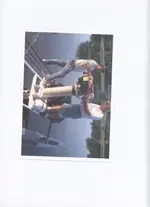Jason, the reason I bought (and then sold) a Jet Ski was to get right up on the shallow sand, next to the beach. But they sanded in the beaches there, and I just sold it to recoup as I didnt like riding them that much. Kind of dashed my hopes to work that area. It will blow the sand away in that way, but not in deeper water, and the jet is tight, not a big broad area like regular mailboxes do. I have seen one doing this. They put on a PVC elbow, by drilling 4 holes in the elbow and the aluminum jet outlet, and using 2 long bolts and nuts. Someone had to sit on it and just keep the throttle just right. Keeps the back end down too. I think for moving the sand in the very shallow water a suction dredge or something like a jetski will work, an air lift is too shallow in the shallow water. They need for the air to rise and expand to lift the sand out. And I dont think a hookah will move much air, maybe in deep water, with enough pipe up top, kind of like Petes scuba tank thingy. And yes, the usual airlifts use a large CFM compressor to make lots of air. They usually have huge compressors for that on the big rigs. A hookah is only 4 cfm or something like that. With a scuba tank anywhere from 77 cubic feet to 120-160 cubic feet, and you cant blast it out all at once, as Pete said it will last 20 minutes or something like that, is not many CFM.



 Sounds like a built in turbo to me Brad, I got 20 bucks that says we can spin the piston right out of it! Wonder how big a hole she would blow before she blew up.
Sounds like a built in turbo to me Brad, I got 20 bucks that says we can spin the piston right out of it! Wonder how big a hole she would blow before she blew up. 

